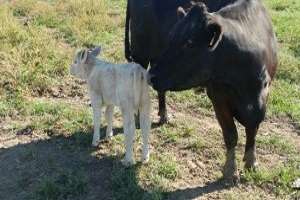By John F. Grimes
The 2007-2008 United States Department of Agriculture (USDA) National Animal Health Monitoring System’s (NAHMS) Beef Study indicated that roughly 18% of all cow-calf operations had all or part of their calving season in the months of September through October. Based on my personal observations while working for OSU Extension over the years, I believe the calving information from the 2007-2008 NAHMS study accurately represents cow-calf operations in Ohio.

Since the vast majority of Ohio’s cow-calf operations calve in the late winter to early spring timeframe, you will see more discussions about breeding seasons that occur in April through July. The breeding season for a fall-calving herd can range from November through February. While many of the management decisions in preparing for the two different breeding seasons are similar, there are two fairly significant differences. One is the obvious variations in seasonal temperature differences and the other relates to the type of forages consumed during the breeding season.
In a spring breeding season we are moving out of a period of feeding harvested forages to a period of grazing lush forages. In a fall breeding season, we are typically ending a grazing season and moving into a period of feeding harvested forages. However, in each breeding season, producers should be offering their females the highest quality forages they have available. The need to feed the highest quality forages during the breeding season is based on the fact that maintenance requirements for energy and protein increase 25-30% for most beef cows after calving. Producers need to plan their supplementation to match or exceed this increased nutrient requirement.
The evaluation of an animal’s body condition score (BCS) prior to calving and from calving to breeding is an important step towards achieving reproductive success. Body condition score is a numerical estimation of the amount of fat on the cow’s body. Body condition score ranges from 1-9; 1 is emaciated while 9 is extremely obese. A change in a single BCS (i.e. 4-5) is usually associated with about a 75 pound change in body weight. Females with a BCS below 5 at calving will take longer to resume cycling and will have longer calving interval the next time around.
It is admittedly difficult to increase the BCS of a beef female once she is in lactation. The best strategy is to calve a beef female at a BCS of 5-6 for optimum reproductive success. If the female is below a BCS of 5, rebreeding performance can be improved by feeding high quality forages and supplemental grains through the breeding season. Thinner cows will result in more cows calving later in the breeding season and thus lighter calves at weaning next year. The producer will also see more open cows at the end of the breeding season with thinner cows.
In light of the fact that feeder calf prices have declined significantly over the past two years, there is a natural temptation for producers to look to reduce any costs associated with cow-calf production. This is a logical consideration for any operation but be careful not to cut corners on practices that will impact reproduction success. One method of improving fertility rates is to perform a breeding soundness examination on the herd bull prior to the breeding season. This is a small expense that will provide the producer with some assurance as to the potential fertility of the herd bull. Also consider vaccinating the cow herd for reproductive diseases such as lepto, BVD, vibrio and trich. An annual vaccination program can help avoid potentially major losses from abortions.
While fall calving is not a commonly used management practice used by Ohio cow-calf producers, it actually offers a superior calving environment over a spring calving season. Fall calving requires some unique management practices to make it a successful enterprise. Preparing for success in the breeding season will go a long way towards making it a profitable endeavor.
Source: osu.edu